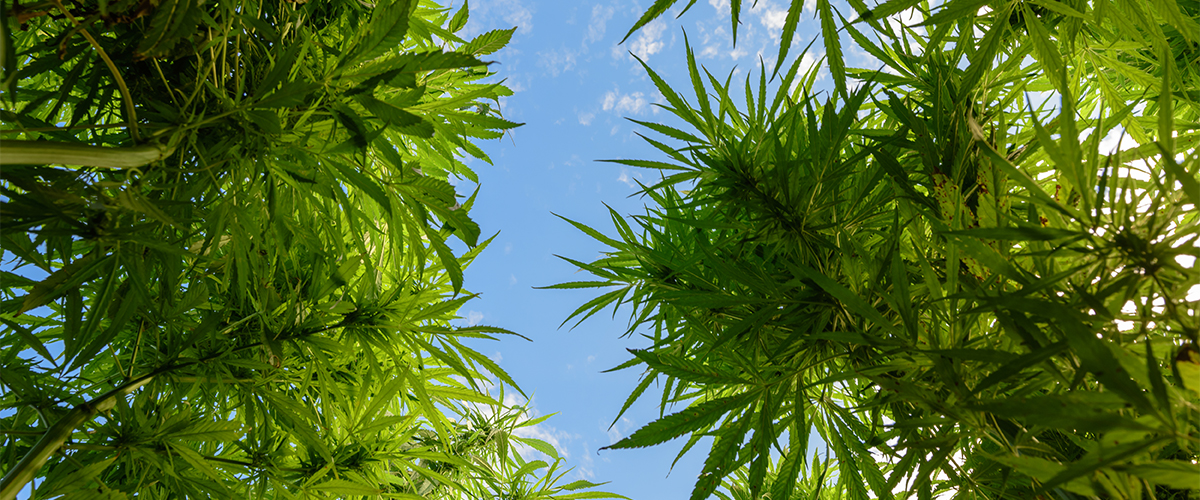[vc_row][vc_column][vc_column_text]
Plots of hemp are being grown at the University of Nebraska-Lincoln, where researchers have already learned key information on how best to cultivate the crop.
After just one season, researchers at the University of Nebraska-Lincoln are already learning about how best to grow hemp in Nebraska. The test crops, grown from seeds imported from Italy and Canada, are being used to learn about how best to cultivate the plant to maximize its potential commercial applications.
The entire hemp plant is useable and has more than 25,000 product applications, some of which include textiles, paper, building materials, body care products, biofuels, and plastic composites. Hemp is also grown to produce cannabidiol (CBD) hemp oil, which can be infused into nutritional supplements. CBD is a non-psychoactive cannabinoid shown through over 23,000 studies to interact with our naturally occurring systems.
Corn has long dominated agriculture in Nebraska, but state officials are hoping that hemp can offer a supplemental income option for farmers. The American hemp market was estimated to be worth $688 million in 2016, and demand for domestically grown hemp and the hemp-based CBD market has grown significantly in recent years.
“Corn is king in Nebraska – no one is going to give up corn for hemp – but at least hemp would give you a third option,” said Dweikat.
While hemp has a long history in America, since 1970 it’s been illegal to grow domestically. The crop has started to make its return since the passing of the 2014 Farm Bill, which included an amendment that gave states permission to pass and implement laws allowing universities and state departments of agriculture to cultivate hemp for research and pilot projects. The policy change was meant to give farmers the opportunity to re-learn best growing practices and to investigate commercial opportunities.
Shortly thereafter, the Nebraska Legislature passed a law allowing university research into the viability of growing hemp. After logistical and regulatory issues caused delays, researchers from UNL were finally granted permission to import hemp seeds last year and plant its first crop June 2016.[/vc_column_text][/vc_column][/vc_row][vc_row][vc_column][vc_single_image image=”27651″ img_size=”full” onclick=”custom_link” img_link_target=”_blank” link=”https://www.medicalmarijuanainc.com/why-do-we-refer-to-hemp-as-industrial-hemp/”][/vc_column][/vc_row][vc_row][vc_column][vc_column_text]Already researchers at UNL have yielded some key information about growing hemp in Nebraska. For one, the Canadian seed they were required to use doesn’t work well with the state’s shorter growing days. The plants the Canadian seed produced flowered too early, had fewer leaves, and grew much shorter and thinner than what’s desirable for producing hemp products.
“If you’re growing hemp for fiber, you need 10-foot-tall plants with a stalk this big,” said Ismail Dweikat, a researcher and professor of horticulture and agronomy at UNL, using his hands to form the diameter of a baseball bat.
The plants that UNL grew from its supply of Italian hemp seed had to be destroyed after a legal situation with the supplier.
Dweikat and his colleagues are interested in exploring other wild hemp seed. The assistant dean for UNL’s agriculture research division, Hector Santiago, reportedly inquired with the Drug Enforcement Agency (DEA) about planting wild seed at a workshop last year, but was told it was against the law. He then spoke with UNL attorneys, but was told there was no work-around federal law.
“We would love to let Ismail have what he wants, but it’s not allowed,” said Santiago. “This crop provides an opportunity for Nebraska.”
Because UNL didn’t receive its seeds until June, researchers were unable to plant them until a month or so after than what’s ideal. This fall, Dweikat plans to figure out how to get permission to collect wild hemp seeds, understanding now that the Canadian seeds aren’t ideal, and to plant them earlier in the season.
You can learn more about hemp and how it’s expanding throughout the U.S. by visiting our education page.[/vc_column_text][/vc_column][/vc_row]






